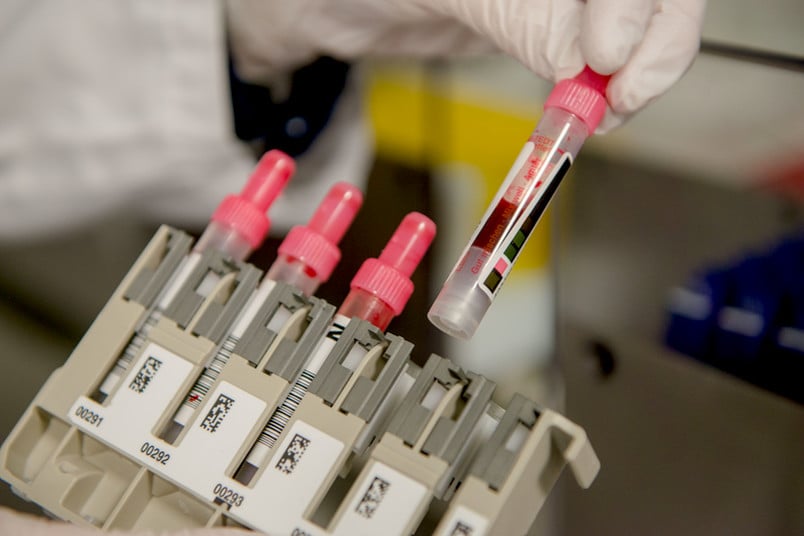
Scientists at the University of Manchester have found molecules in sebum, secreted by the skin, that are responsible for a unique odor in people with Parkinson’s disease. Sebum could also help detect other conditions, including COVID-19.
Joy Milne from the UK was married for ten years to her 31-year-old husband when one day she noticed that her husband had a musty smell, one he hadn’t had before. It didn’t go away but instead became more intense over the next year. The couple had no explanation for it. More than ten years later, Joy’s husband was diagnosed with Parkinson’s disease. Joy and her (now deceased) husband, who both worked in health care, instinctively understood that the smell had something to do with the disease.
Changed levels of neurotransmitters
The suspicion that Parkinson’s has a scent was scientifically proven last year. Researchers from, among others, the Manchester Institute of Biotechnology (MIB) used mass spectrometry to identify the molecular compounds that cause this unique odor. To find out what causes it, the researchers collected sebum samples from more than 60 subjects, both Parkinson’s patients and people without that condition. They then analyzed the data from the samples at the molecular level and found the presence of hippuric acid, eicosan and octadecanal in Parkinson’s patients alone. These are biomarkers that indicate altered levels of neurotransmitters found in Parkinson’s disease patients.

Joy Milne ‘checked’ the results with her olfactory organ. The research was published in ACS Central Science, an (open source) American scientific journal with a good reputation.
Diagnostic test
The research of the MIB, which is part of the University of Manchester, should lead to the development of a diagnostic test to detect Parkinson’s disease at an early stage. Such a test could be carried out by any general practitioner who sees a patient complaining of stiffness, inertia and loss of smell, symptoms that may indicate the early stage of Parkinson’s disease. Nowadays, such symptoms are often not attributed to it, especially when young people are concerned. “It is extremely important to detect Parkinson’s disease early, especially in young people,” says Perdita Barran, professor of mass spectrometry at the MIB, one of the authors of the research paper. “The first symptoms of Parkinson’s disease are minor and difficult to recognize. Partly because of this, the disease is not diagnosed as quickly.”
With a molecular test, the disease could be detected at an early stage. The disease, although not curable, can therefore be better controlled, benefitting millions of people. In the Netherlands more than 35,000 people have the condition, in the UK over 125,000 people suffer from it and the U.S. has about a million Parkinson’s patients. Barran and her team are currently conducting a study among 2,000 people who have symptoms such as those associated with Parkinson’s disease, but in whom the disease has not been diagnosed.
Useful for diagnosing other diseases
The fact that sebum and its smell have predictive, diagnostic qualities is fairly new and is not limited to the detection of Parkinson’s disease. “We are exploring numerous other diseases, including COVID-19,” explains Barran enthusiastically. “The results are very good, but have yet to be published. However, an intellectual property patent has already been applied for, says the professor. “We’ve screened a large number of people for Parkinson’s, some of whom also have other diseases, such as diabetes, high blood pressure and obesity. And we are also able to distinguish those disorders.” According to Perdita Barran, BIM is the only scientific institute in the world that conducts research into sebum as a diagnostic factor.
With sebum as an indicator, the future of diagnostics is being turned upside down. “Sebum offers a simple method of analysis and is much easier and cheaper to take than blood and urine, the usual bases to make a diagnosis. When blood is taken, proteins must be added and it must be kept refrigerated and processed almost immediately so that its composition does not change. The same applies to urine. With a sebum sample, time is an unimportant factor. Molecules are stable. And you don’t need a needle.
Better indicator than urine or blood
It may come as a surprise that sebum has never been used for diagnostic purposes before. “Sebum is studied scientifically, but 99 percent only in the field of dermatology and skin disorders,” says the professor. Sebum is a better indicator than urine or blood, Barran thinks. Because the molecular substance is stored in sebum, it can also be explained that the smell coming from it has an almost permanent dimension. It’s like grandmother’s coat, which, even though she hasn’t been around for years, retains her special smell.
Barran thinks that a diagnostic test will become available in five years’ time.








